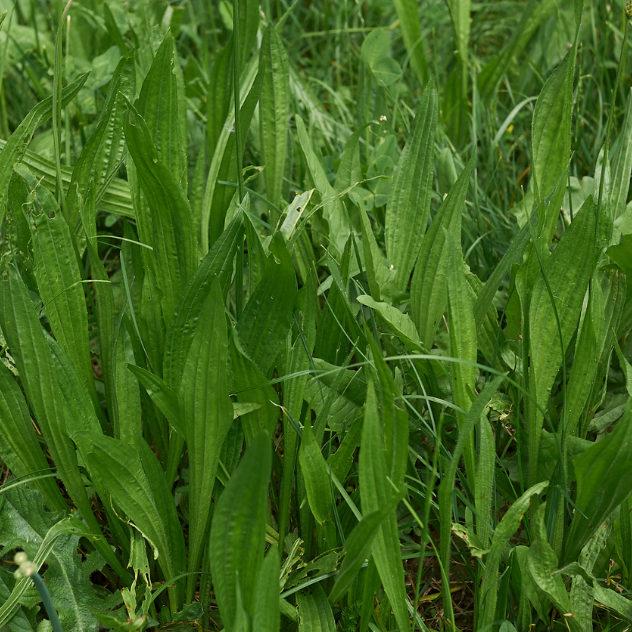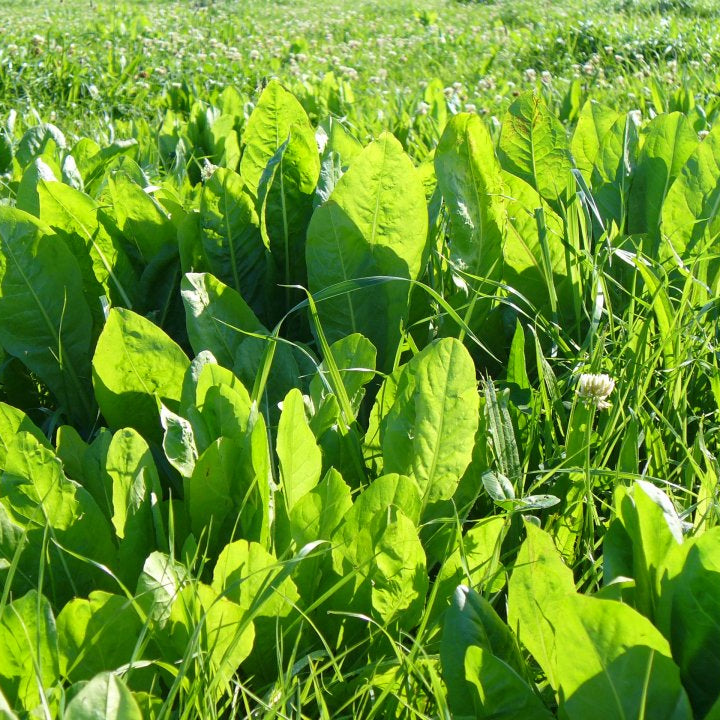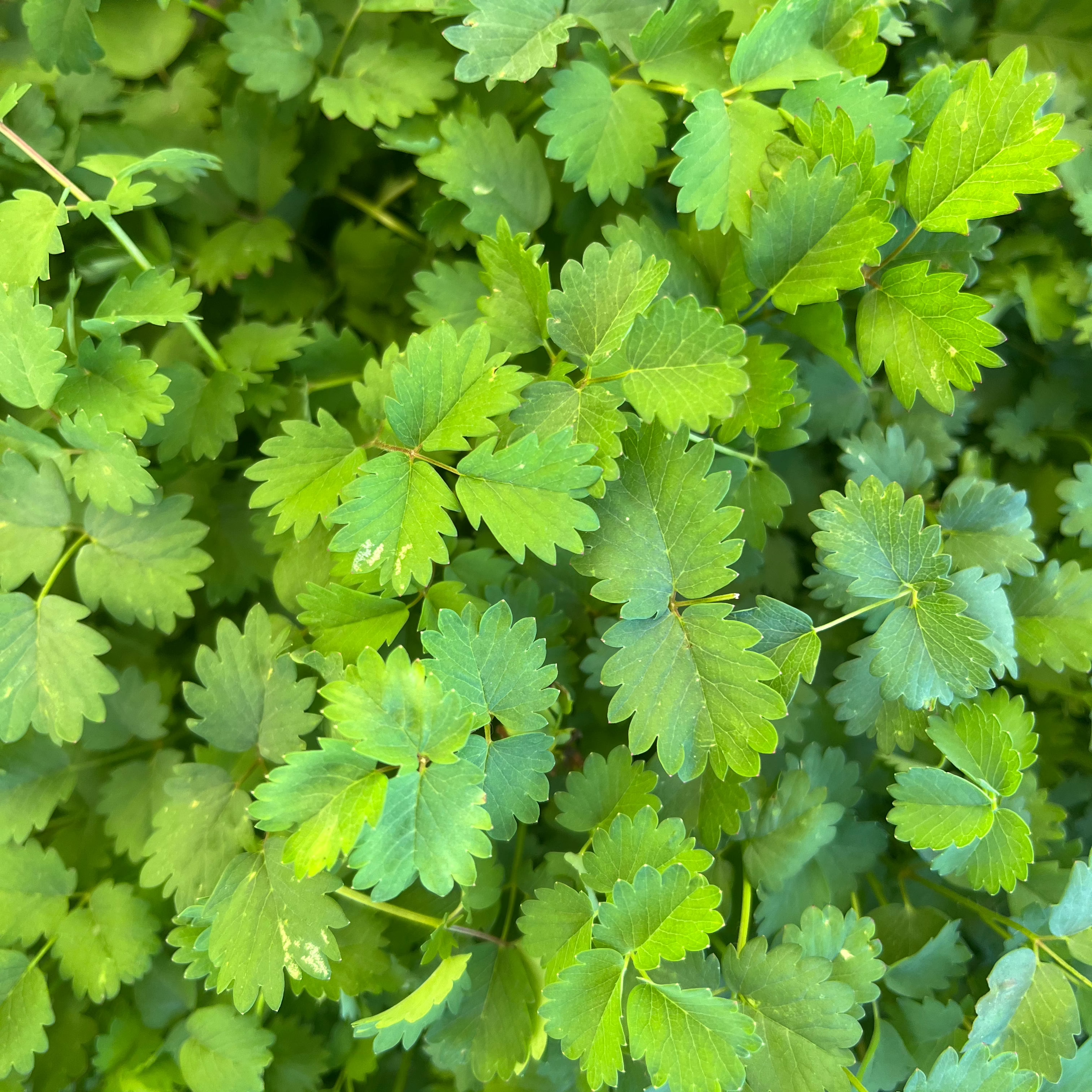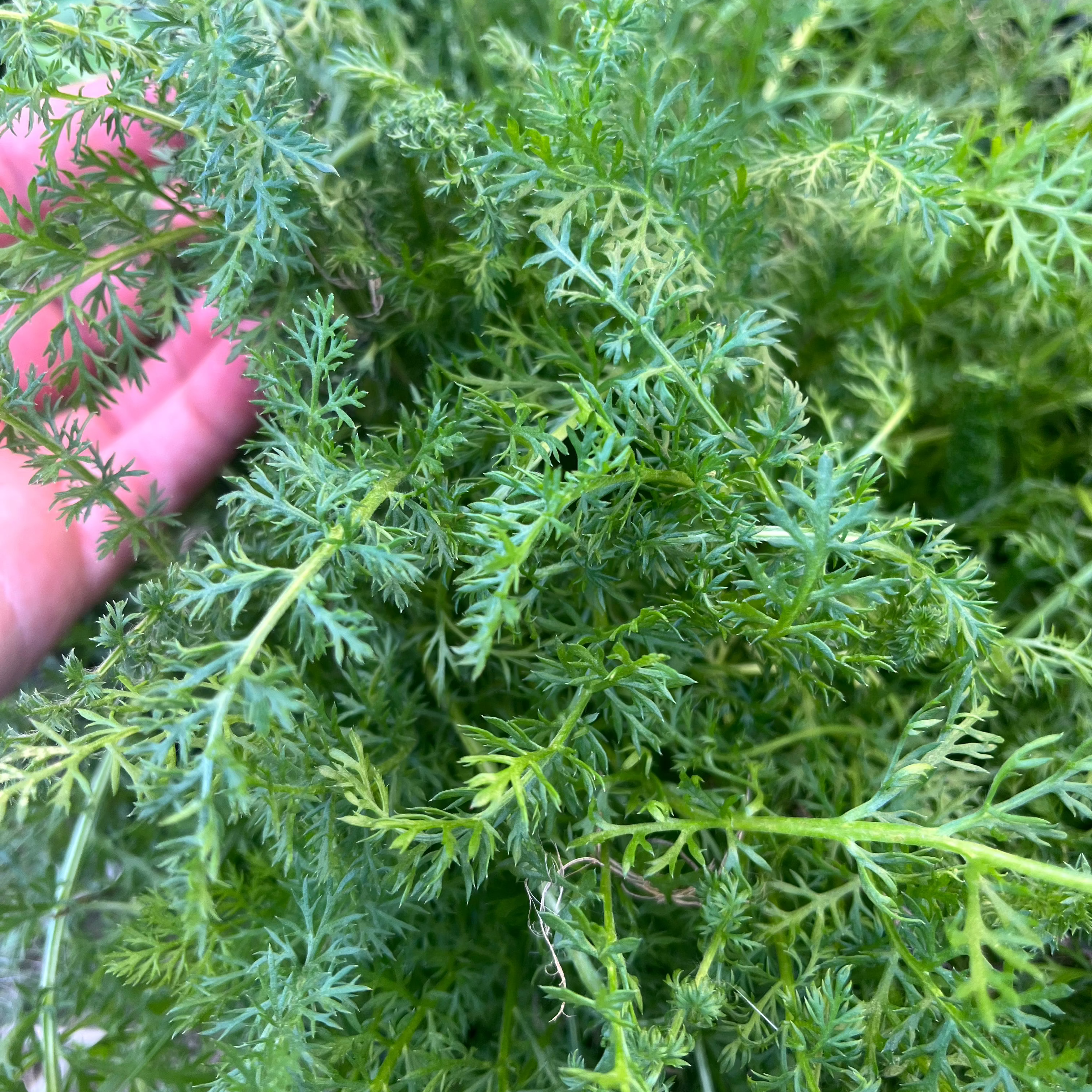Proprietary Herbs

HERCULES Plantain
Hercules is a late-flowering, perennial plantain developed specifically for superior forage quality, yield, and persistence. With an erect growth habit during warmer months and a semi-prostrate structure in cooler periods, Hercules protects itself from overgrazing, ensuring excellent seasonal productivity. It flowers approximately 28 days later than traditional varieties like Tonic, significantly extending the period of peak nutritional value. Hercules produces a robust fibrous root system, enabling efficient extraction of water and nutrients from deeper soil layers, greatly enhancing drought resilience and mineral uptake.
Key Benefits and Advantages
Trials have consistently demonstrated Hercules as one of the highest-yielding plantain varieties, particularly during critical spring and summer months. Its high-quality forage is exceptionally palatable, offering substantial levels of important minerals such as calcium, sodium, copper, and selenium. Elevated anthocyanin and tannin content further distinguishes Hercules by improving nutrient availability in the rumen, enhancing nitrogen utilisation, and helping prevent common livestock issues such as bloat. Livestock grazing Hercules plantain typically show improved animal growth rates, better health outcomes, and increased productivity.
Soil and Climate Suitability
Hercules adapts well to a wide range of soil conditions, from fertile, moisture-retentive soils to drier, free-draining sites. Its deep root structure significantly enhances tolerance to dry conditions, performing well even when moisture becomes limited. It thrives under annual rainfall conditions of 500 mm or higher but can sustain productivity in moderately drier environments due to its deep rooting ability.
Recommended Sowing and Management
Recommended sowing rates for Hercules are 1–2 kg/ha when mixed within pastures and 6–10 kg/ha for standalone forage crops, ideally sown no deeper than 10 mm. Optimal grazing management involves rotational grazing practices, maintaining residual heights of 5–7 cm to encourage vigorous regrowth and maximise forage availability. Moderate fertiliser applications, particularly phosphorus and potassium, help sustain productivity and persistence.
Compatibility with Other Species
Hercules plantain blends exceptionally well with chicory, clovers, and ryegrasses, creating diverse, high-performing pastures ideal for livestock finishing and improving overall animal productivity.

HERBIVORE Forage Chicory
Herbivore is a high-quality forage chicory specifically bred for improved livestock grazing efficiency and forage utilisation. Known for its erect, leafy growth habit, Herbivore quickly establishes and rapidly regenerates after grazing, enabling shorter grazing rotations and providing continual access to high-quality forage. Its deep, fibrous taproot system significantly enhances tolerance to drought conditions and enables efficient extraction of nutrients and minerals from deep soil reserves, which are then distributed into the leafy biomass, ensuring consistently superior nutritional value.
Key Benefits and Advantages
Herbivore chicory stands out due to its rapid establishment and exceptional regrowth vigour, allowing farmers to implement efficient rotational grazing systems. Its forage quality is exceptionally high, with elevated levels of metabolisable energy (ME), digestibility, and crude protein, directly translating into improved livestock performance, including higher weight gains and improved milk production. Herbivore is particularly valuable in finishing systems or where enhanced animal performance is critical, making it an excellent choice for intensive grazing or high-performance forage mixes.
Soil and Climate Suitability
Highly adaptable, Herbivore chicory performs effectively across varying soil fertilities and climatic conditions. It prefers moderately fertile soils but tolerates less fertile sites due to its deep root structure. Optimal annual rainfall for maximum productivity ranges from 500 mm upwards, though its drought resilience allows it to maintain growth during periods of moisture stress.
Recommended Sowing and Management
Herbivore chicory should be sown at rates of 1–3 kg/ha when included in pasture mixes and approximately 6–8 kg/ha for pure chicory stands, ideally sown no deeper than 10 mm. For best results, rotational grazing with residual heights around 5 cm promotes rapid and consistent regrowth. Herbivore responds positively to moderate fertiliser inputs, particularly nitrogen and phosphorus, enhancing both forage yield and nutritional quality.
Compatibility with Other Species
Herbivore chicory integrates seamlessly with ryegrasses, plantain, and clovers, forming versatile and productive pasture mixes suitable for sheep, beef, and dairy grazing systems. These combinations enhance pasture diversity, resilience, and overall animal health and productivity.
Other Herbs
-

Sheep's Burnett
Sheep’s Burnett is a hardy, perennial forage herb highly valued for drought tolerance, nutritional quality, and suitability to challenging soils. Known for its deep-rooted growth habit, it effectively accesses moisture and minerals, providing nutritious feed during dry conditions. It suits low-fertility, free-draining soils and is ideal in diverse pasture mixes for enhancing forage availability, palatability, and drought resilience.
-

Yarrow
Yarrow is a resilient, perennial forage herb widely used in pasture mixes for its adaptability to poor soils and drought-prone environments. With deep roots, it provides valuable feed under challenging conditions, offering livestock beneficial minerals and improved grazing diversity. It thrives in low-fertility soils and requires minimal rainfall, making it particularly suited to dry or marginal pasture situations.


